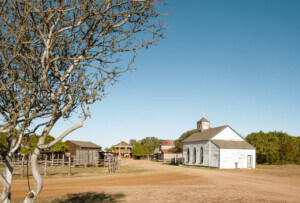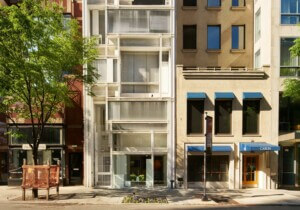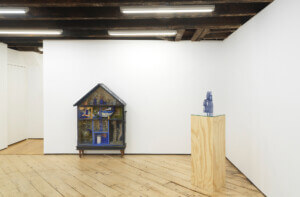The New York City Landmarks Preservation Commission continued its efforts to preserve what have been, at least historically, unlikely landmarks. There is focus on the not-so-outer boroughs and modernist masterpieces and on the scruffy, increasingly tony “Lower East Side,” one of the oldest, yet long-neglected parts of the city. This is of course not the small neighborhood that had been sequestered by real estate agents, but the real LES, as defined by historians and historic maps, from 14th Street to the Brooklyn Bridge, with the Bowery as its eastern bounds. In 2007 and 2008, the commission surveyed more than 2,300 properties and has been bolstering the landmarks rolls ever since, from Webster Hall to Wheatsworth Bakery. Yesterday, three more were added.
You may never have noticed 97 Bowery Street before, unless maybe you were looking for karaoke in Chinatown, because that’s what occupies the first two floors of this unassuming cast iron beauty. The Loew’s Canal Street Theatre makes a little more sense, given the name, though it, too, is all but hidden behind the garish storefronts that are de rigueur, er, 典型 (typical) in Chinatown. The gorgeous terracotta cornice is still visible behind grime from the Manhattan Bridge if you look closely, though. The Eleventh Street Methodist Episcopal Chapel (now the Father’s Heart Church) is perhaps the most obvious landmark based simply on looks. But on the Lower East Side, it’s not just about the looks. “These buildings collectively speak to many aspects of the immigrant experience in the East Village and on the Lower East Side in the 19th and early 20th centuries,” Commission Chair Bob Tierney said in a release.
Consider the chapel. The evangelical Methodists to foster outreach to the city’s burgeoning immigrant community. Ironically, they eventually took it over, when in 1930 and reopened 11 years later as a Slavik Eastern Orthodox church. But as much as saving these previously overlooked buildings, the commission is also preserving them from the rampant overdevelopment that has seized the neighborhood in the past few decades, and particularly during the boom. Commission spokeswoman Elisabeth de Bourbon wouldn’t say that this was the explicit purpose of the renewed focus on the LES. “But it certainly doesn’t hurt,” she said. The real interesting question is what will happen to all those gaudy signs when gentrification finally gets to them, and renovations no doubt ensue, as they have in Tribeca, Soho, and elsewhere. Will they be grandfathered in? Or will the commission fight hard for a full restoration?










